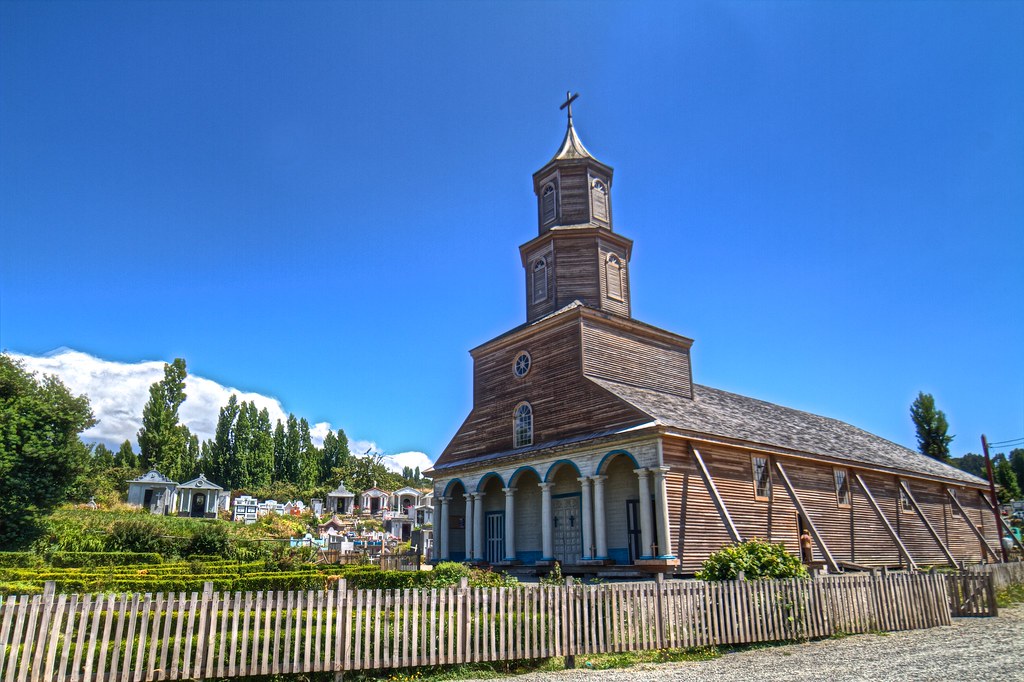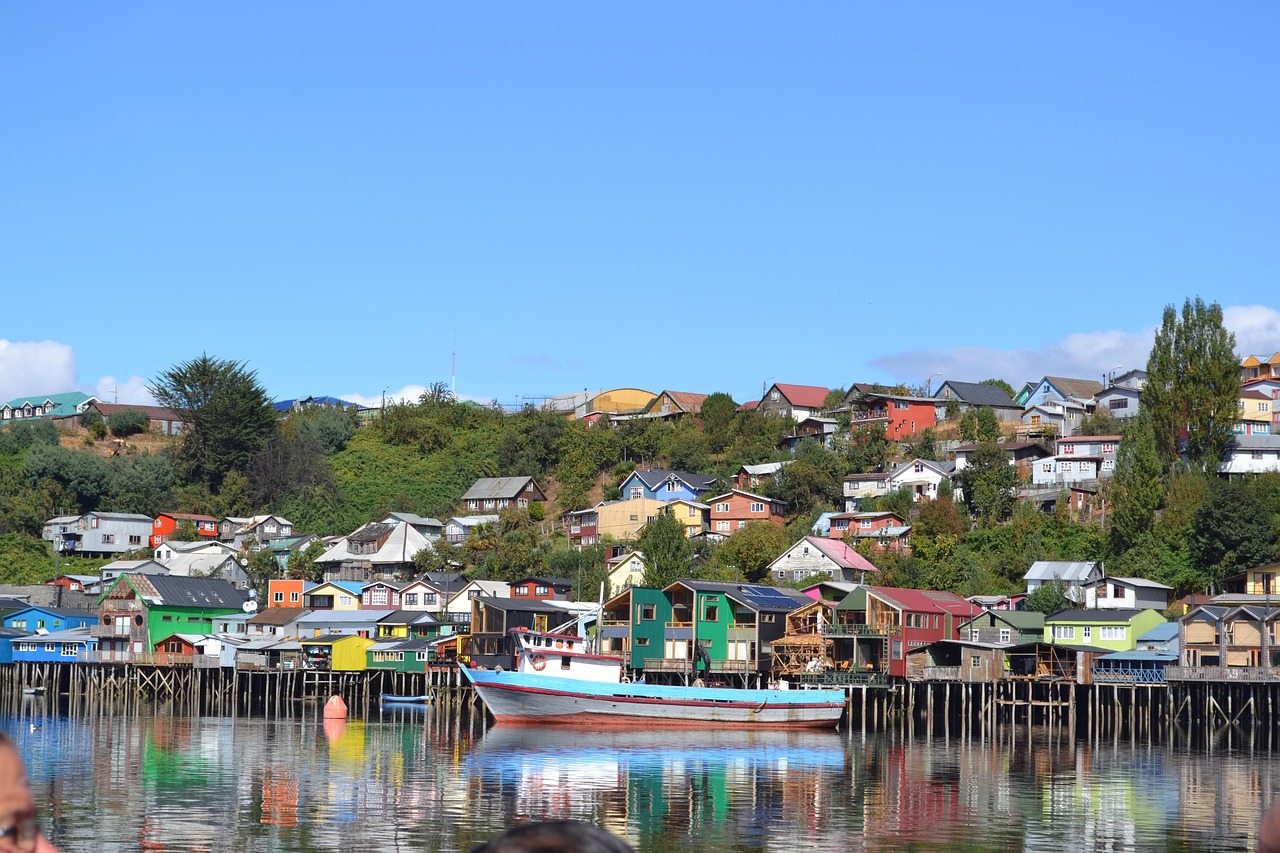Hey there, I recently visited Isla de Chiloé, Chile’s largest island, and it’s a destination that feels like a hidden gem. With its colorful stilt houses, UNESCO wooden churches, and misty landscapes, Chiloé blends indigenous Mapuche and Spanish cultures into something truly unique. If you’re looking for an off-the-beaten-path adventure, this guide has everything you need to plan your trip.
Top Attractions on Isla de Chiloé
Chiloé is packed with sights that mix nature, culture, and charm. Here’s what you can’t miss:

- UNESCO Wooden Churches: These 16 churches are architectural wonders, built from native wood without nails. Highlights include the vibrant San Francisco Church in Castro and the oceanfront Tenaún Church. Explore the “Chiloé Churches Route” for a cultural deep dive.
Learn More: Visit the UNESCO World Heritage Site. - Palafitos of Castro: Picture-perfect wooden houses on stilts line Castro’s waterfront. At low tide, the stilts peek out, and some palafitos double as cozy cafés or hotels—grab a coffee with a view!
- Chiloé National Park: On the west coast, this park offers rainforest hikes, coastal dunes, and deserted beaches. The Pier of Souls trail, tied to local legends, is a must-see. Bring binoculars for spotting the tiny Darwin frog.
- Puñihuil Penguin Colonies: Near Ancud, see Humboldt and Magellanic penguins nesting together—a global rarity. A 1.5-hour boat tour ($15 USD) from October to March also features sea lions and dolphins.
- Dalcahue Artisan Market: Sundays here buzz with handmade woolens, wood carvings, and jams. Pair your shopping with a visit to the nearby UNESCO-listed Iglesia de Nuestra Señora de los Dolores.
- Local Food: Don’t leave without trying curanto—a hearty mix of seafood, meat, and potatoes cooked underground. It’s about $12 USD in Castro. Add milcao (potato dumplings) and licor de oro (a saffron-milk liqueur) for the full Chilote experience.
How to Get to Isla de Chiloé
Reaching Chiloé is easy, whether you fly, drive, or take a scenic bus-ferry combo:
- By Air: Fly from Santiago to Mocopulli Airport (MHC) near Castro (2 hours, $100–$150 USD round-trip via LATAM or Sky Airlines). Taxis to town cost $15 USD.
- By Bus and Ferry: From Santiago, a 15–17-hour bus ride to Puerto Montt ($25–$40 USD) connects to a 2–3-hour bus to Chiloé ($8–$10 USD), including a free ferry across the Chacao Channel.
- By Car: Rent a car in Puerto Montt ($50–$70 USD/day) and take the Pargua-Chacao ferry ($20–$30 USD per vehicle, 25 minutes). Perfect for exploring at your own pace.
- From Patagonia: Ferries from Chaitén (4 hours, $22 USD per person) or Puerto Chacabuco link to Quellón in southern Chiloé.
Tip: The ferry rides are smooth, but pack ginger candies if you’re wary of motion.
Packing Essentials
Chiloé’s weather is moody year-round. Here’s what to bring:
- Waterproof jacket and shoes (rain is common, even in summer)
- Layers (fleece, sweaters) for 10–20°C (50–68°F) temps
- Hiking shoes for muddy trails
- Chilean pesos ($50–$100 USD in cash) for rural spots
- Camera or smartphone with a charger
- Reusable water bottle and snacks
- Sunscreen for sunny coastal days
Trip Costs
Chiloé is budget-friendly compared to other Chilean hotspots. Here’s a rough estimate (USD, summer rates):
- Transport: Flights: $100–$150; buses: $50–$80 round-trip; car rental: $50–$70/day + ferry.
- Lodging: Hostels: $15–$30/night; mid-range hotels or palafitos: $50–$100/night.
- Food: Meals: $8–$15; market snacks: $3–$6.
- Activities: Penguin tours: $15; park entry: $5–$7; guided tours: $20–$50.
- Souvenirs: Crafts: $5–$20.
A 3-day trip costs $200–$400 per person, depending on your style. Visit in spring or fall for deals.
Nearby Destinations
Extend your trip with these spots:
- Isla Quinchao: A 30-minute ferry from Dalcahue ($2–$3) leads to Achao’s ancient UNESCO church and lively February festivals.
- Lemuy Island: Quiet villages and three UNESCO churches await—great for biking.
- Puerto Montt: A 2–3-hour bus ride away, explore its fish market and volcano views.
- Parque Tantauco: Southern Chiloé’s wilderness park offers treks and whale sightings.
- Puerto Varas: Four hours from Castro, this lakeside town dazzles with volcanic scenery.
Why Visit Isla de Chiloé?
Chiloé’s magic lies in its myths, landscapes, and warm Chilote hospitality. Summer (December–March) is ideal for weather and events, but spring offers birdwatching. Whether you’re snapping palafito pics or savoring curanto, this island delivers an unforgettable escape.

